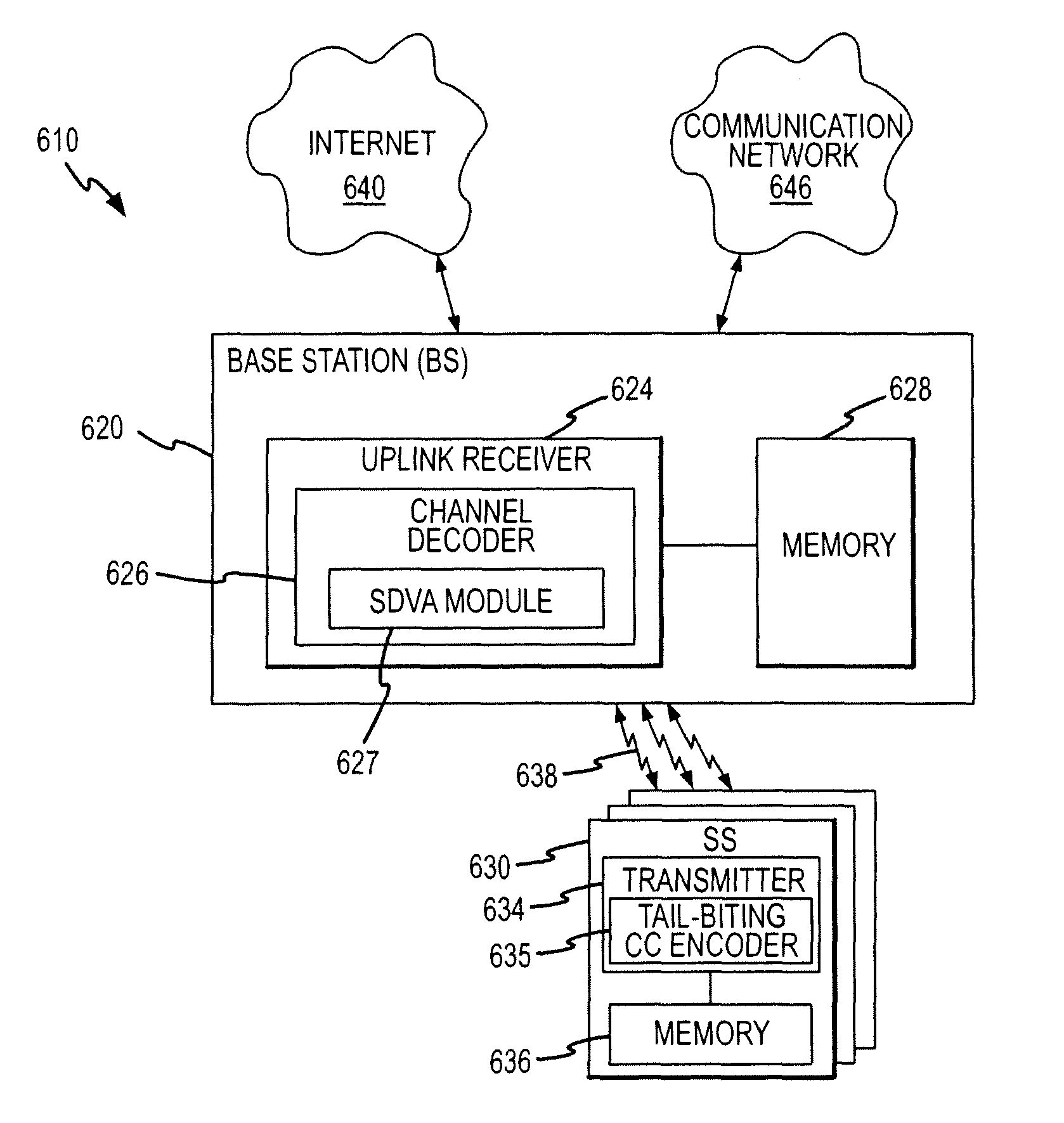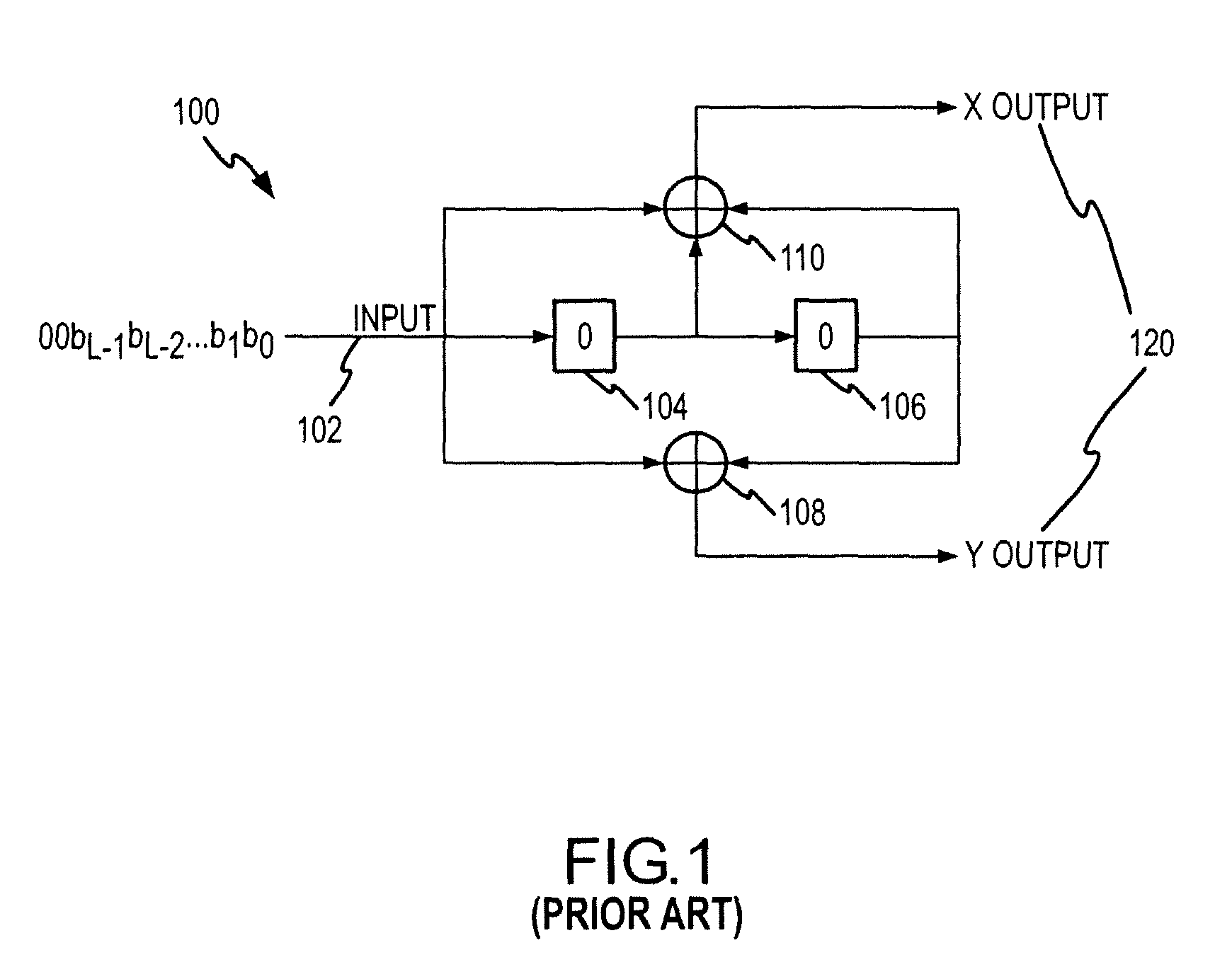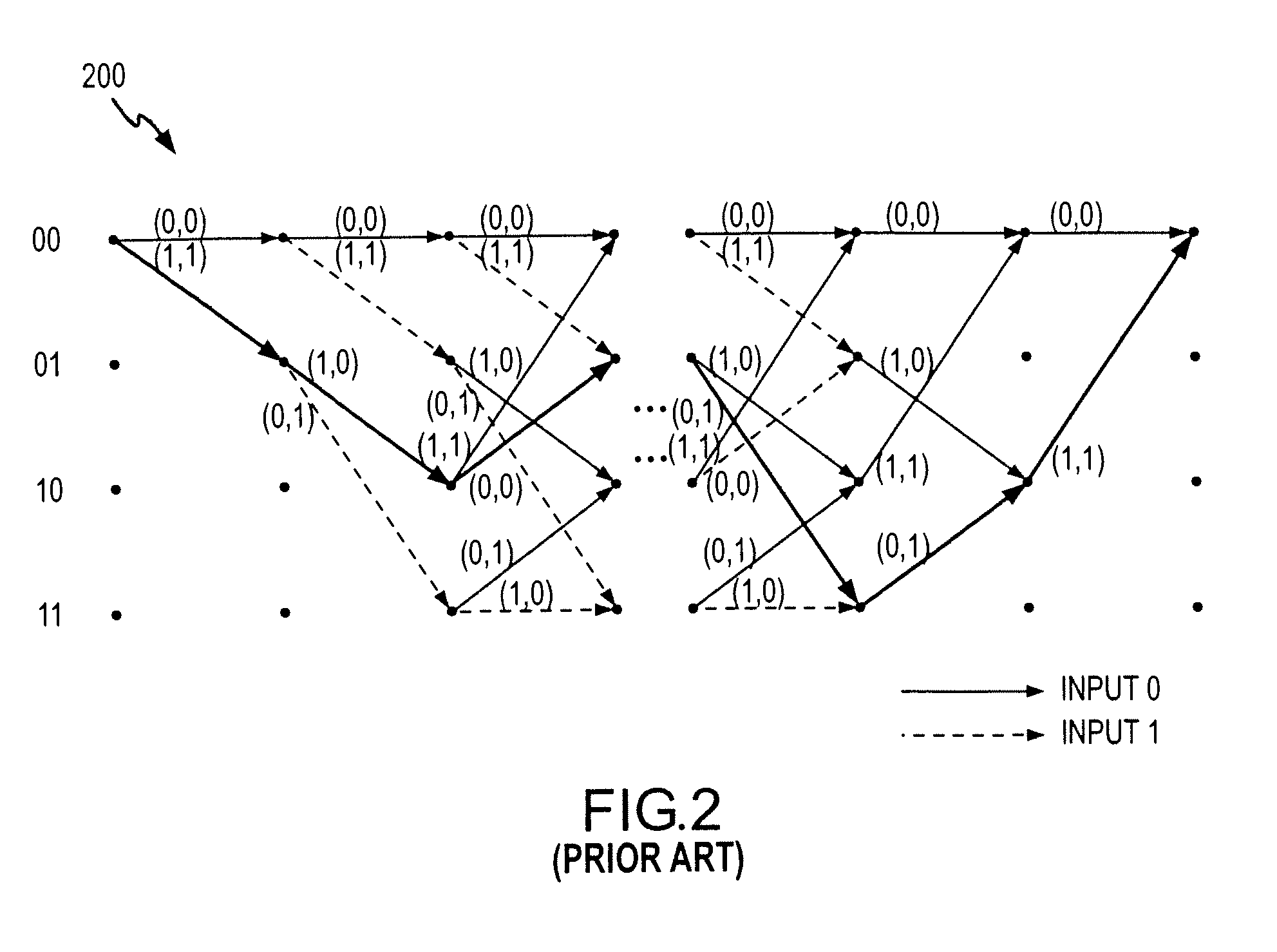Decoding method for tail-biting convolutional codes using a search depth viterbi algorithm
a convolutional code and search depth technology, applied in the field of communication system error correction, can solve problems such as difficult implementation in operation communication system, and achieve the effect of reducing the complexity of the decoding process and saving memory
- Summary
- Abstract
- Description
- Claims
- Application Information
AI Technical Summary
Benefits of technology
Problems solved by technology
Method used
Image
Examples
Embodiment Construction
[0040]The present invention is directed to methods (and components such as decoders implementing such methods and receivers or receiving devices with such decoders) that are designed to provide effective decoding of signals or data streams encoded using tail-biting convolutional codes but yet to require less computational-complexity and memory usage.
[0041]FIG. 6 illustrates a communication system 610 in which the tail-biting convolutional codes decoding techniques of the present invention may be utilized. As shown, the system 610 includes a base station or BS 620 that is in communication with one or more public or private networks, e.g., Internet 640 and communication network 646, and in typical embodiments, the link to networks 640, 646 is a wired or wireless communication link, such as those defined between BSs and networks in IEEE 802.16 or the like (e.g., a WiMAX network-BS link). The BS 620 is also in communication via user or SS signals 638 with SSs 630. The signals 638 are en...
PUM
 Login to View More
Login to View More Abstract
Description
Claims
Application Information
 Login to View More
Login to View More - R&D
- Intellectual Property
- Life Sciences
- Materials
- Tech Scout
- Unparalleled Data Quality
- Higher Quality Content
- 60% Fewer Hallucinations
Browse by: Latest US Patents, China's latest patents, Technical Efficacy Thesaurus, Application Domain, Technology Topic, Popular Technical Reports.
© 2025 PatSnap. All rights reserved.Legal|Privacy policy|Modern Slavery Act Transparency Statement|Sitemap|About US| Contact US: help@patsnap.com



